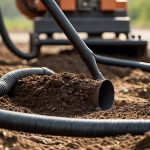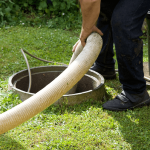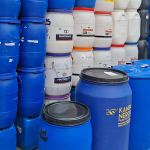Emergency Septic Services: How to Handle a System Overload During Floods
In flood-prone areas of Australia, heavy rains and rising waters pose a significant risk to households with septic systems. When floodwaters infiltrate a septic tank or drainage field, it can lead to serious complications including a flood-damaged septic system and widespread contamination. In these instances, emergency septic services are critical for managing the situation safely and protecting public health. This article outlines the risks, the warning signs, and the steps to take before, during, and after a flood to reduce the likelihood of a septic system overload.
The Risks of a Flood-Damaged Septic System
A flood-damaged septic system can become a serious biohazard. When floodwaters enter the system, they can saturate the drain field, causing wastewater to back up into your home or onto the surrounding land. This creates a dangerous environment filled with bacteria, viruses, and other pathogens that pose significant health risks.
Floodwater is rarely clean, and when it mixes with sewage from an overwhelmed septic system, the situation can escalate quickly. Not only is there the risk of raw sewage exposure, but contaminated water can also spread into local waterways, affecting wildlife and nearby communities. If your property is at risk of flooding, understanding the vulnerabilities of your septic system is essential to minimise damage and ensure a quick recovery with the appropriate services.
Emergency Septic Services: What to Do Before Flood Waters Arrive
Preparation is key to protecting your septic system from water damage. Before heavy rains or floods arrive, there are several actions that you can take:
- Inspect the system: Ensure your septic tank and drainage components are in good condition. Regular inspections by a professional can help you identify and fix weak points.
- Pump out the tank: A pre-emptive septic pump-out can help reduce the risk of overflows during floods. By lowering the tank’s contents, you can provide more room for incoming water and waste without forcing it to overflow.
- Protect tank openings: Make sure the septic tank’s lids and inspection ports are sealed to prevent floodwater from entering. Floodwater intrusion is a leading cause of a flood-damaged septic system.
- Limit water use: As a precaution, reduce your household’s water use ahead of a flood event. This includes limiting laundry, showers, and dishwasher cycles to ease pressure on the system.
Taking these preventative steps early can reduce the likelihood that you’ll require emergency septic services during a flood.
What to Do During a Flood
If floodwaters begin to rise around your property, it’s important to stop using your septic system immediately. Continuing to flush toilets, use sinks, or run appliances that drain into the system can worsen the damage.
Even if your tank seems intact, the surrounding drain field may be waterlogged and unable to absorb additional wastewater. Any waste entering the system during this time may be pushed back into the house or overflow into your yard.
Avoid contact with any standing water on your property. It may contain a mix of floodwater and sewage from a compromised septic system. In such situations, the system likely requires septic services to assess the extent of the damage and initiate a clean-up.
Post-Flood Septic System Recovery
Once the floodwaters recede, the clean-up process begins. This phase is critical for preventing long-term environmental damage and safeguarding household health. Do not assume the septic system is functioning normally just because the water level has dropped. Instead, take the following steps:
- Call a professional immediately: Contact a licensed provider like Clarence Valley Septics to assess the situation and perform a safe septic pump-out. Septic services can help remove backed-up waste and evaluate whether the tank or drain field were structurally damaged.
- Avoid system use: Until a full inspection has been completed, continue to limit or cease all water use that drains into the septic system. This helps prevent the spread of contaminants and allows the soil in the drain field time to dry out.
- Document the damage: Take photographs and keep records of any flood-damaged septic components. This documentation may be useful for insurance claims or government assistance.
- Disinfect affected areas: Any parts of your home or property that came into contact with sewage-contaminated floodwater must be thoroughly cleaned and disinfected to eliminate potential pathogens.
- Monitor for signs of ongoing issues: Even after a septic pump-out and any repairs that are undertaken, watch for slow drains, gurgling toilets, or pooling water near the tank or drain field. These may indicate lingering problems that require follow-up servicing.
Why Professional Emergency Septic Services Matter
Attempting to manage a flood-damaged septic system without professional help can be dangerous and ineffective. Septic systems are complex, and flood conditions make them even more unpredictable. Trained technicians can safely conduct inspections, determine whether a septic pump-out is required, and restore the system to a safe working condition.
Emergency septic services also ensure that any environmental hazards are handled in compliance with local laws. Improper handling or disposal of waste could result in fines, health issues, or further contamination of your property and surrounding areas.
Protecting Your Property and Health
Floods pose a serious threat to septic systems, turning a household necessity into a potential health hazard. A flood-damaged septic system can compromise your property’s safety and lead to costly repairs if not addressed promptly. By knowing what steps to take before, during, and after a flood, homeowners can minimise any impact and ensure a quicker, safer recovery. The key is to act early, stop system use when needed, and seek expert help through professional septic services.
Be Prepared – Contact Clarence Valley Septics
If your property is at risk of flooding or if you’ve recently experienced flood damage, don’t wait until it becomes a health emergency. Contact Clarence Valley Septics for prompt, professional septic services. Our team is equipped to handle septic tank pump-outs, inspections, and system repairs to ensure your home and community remain safe.


